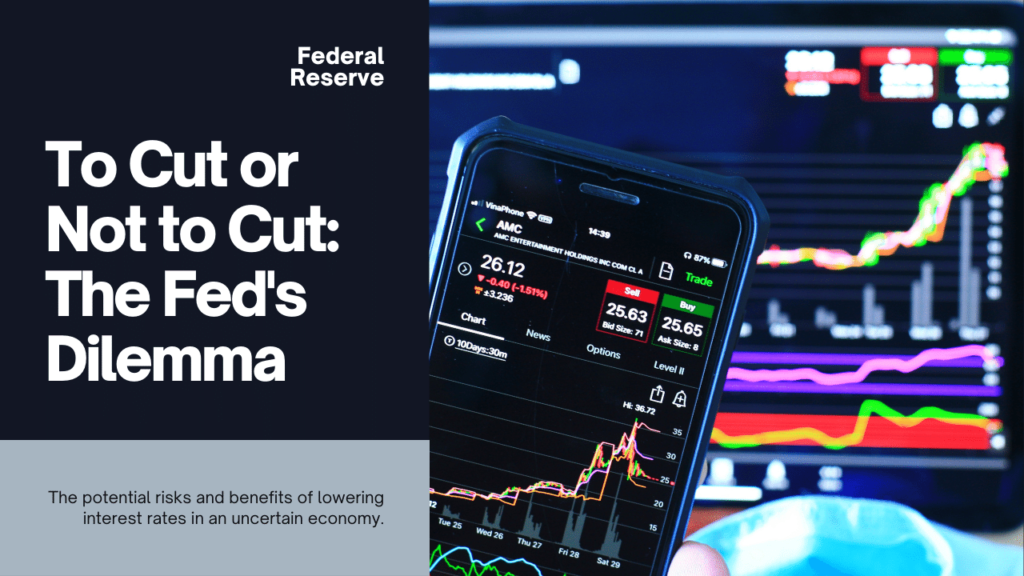The Federal Reserve is at a crossroads for Rate Cuts, with inflation levels cooling from the previous year’s scorching heights to a more manageable 3% in October. As the central bank contemplates the path forward, the debate over “adjustment cuts” intensifies. However, beneath the surface, a nuanced narrative unfolds, challenging the conventional wisdom surrounding monetary policy.
In the heart of the financial world, the Federal Reserve stands poised for action. As the fervor of last year’s inflation rates simmers down, murmurs of “adjustment cuts” echo through the halls of economic discourse. In this piece, we delve into the intricacies of these proposed cuts, exploring not only the risks they carry but also the evolving landscape of financial conditions.

Unveiling the Real Policy Rate: More Than Just Numbers
The Federal Reserve’s policy rate, currently standing at 5.5%, takes center stage in discussions. However, the real star is the elusive real policy rate, dancing to the tune of inflation adjustments. We unravel the complexities of passive tightening and loosening, examining the repercussions on economic trends and the delicate dance between stimulus and drag.
The Pendulum Swings: Risks of Passive Tightening
Adjustment cuts are heralded as saviors against the specter of passive tightening. But are they a silver bullet or a double-edged sword? Dive into the potential consequences – a looming recession and spikes in unemployment – and discover why some argue they are a necessary evil.
The Symphony of Financial Conditions
In a surprising twist, the narrative shifts to the realm of financial conditions, already experiencing a significant loosening sans rate cuts. Our journey explores the subtle orchestrations of the Treasury’s debt management, unveiling how it became the unsung hero in the recent rally of stock and bond markets.
Blurring Boundaries: The Convergence of Monetary and Fiscal Policy
As the Federal Reserve tightens its monetary grip, the Treasury’s actions blur the lines between monetary and fiscal policy. We dissect the intricate balance of bond supplies, revealing a delicate dance that impacts both bond and stock prices.
A Cautionary Tale: Loosening the Strings Further
Financial conditions have loosened their grip, courtesy of Treasury Secretary Janet Yellen’s strategic moves. Cutting rates now, some argue, could be akin to throwing fuel on an already blazing economic fire. We explore the potential repercussions – from stimulated economies to a looming second wave of inflation.
The Dilemma: To Cut or Not to Cut?
The argument for adjustment cuts clashes with the counter-narrative of fiscally induced loosening. We weigh the scales and question whether the Fed risks its credibility and reputation by venturing into the perilous territory of rate cuts.
Conclusion: Striking a Harmonious Chord
In this symphony of economic intricacies, the Federal Reserve finds itself at a crossroads. As we conclude our exploration, we reflect on the delicate balance required to navigate these uncharted waters. The keyword, “monetary policy,” echoes through our analysis, emphasizing its pivotal role in shaping the economic melody.
As the Federal Reserve contemplates its next move, the resonance of our analysis lingers—a reminder that in the ever-evolving world of finance, the pursuit of balance is an art form. Let us remain vigilant observers as the saga unfolds.
